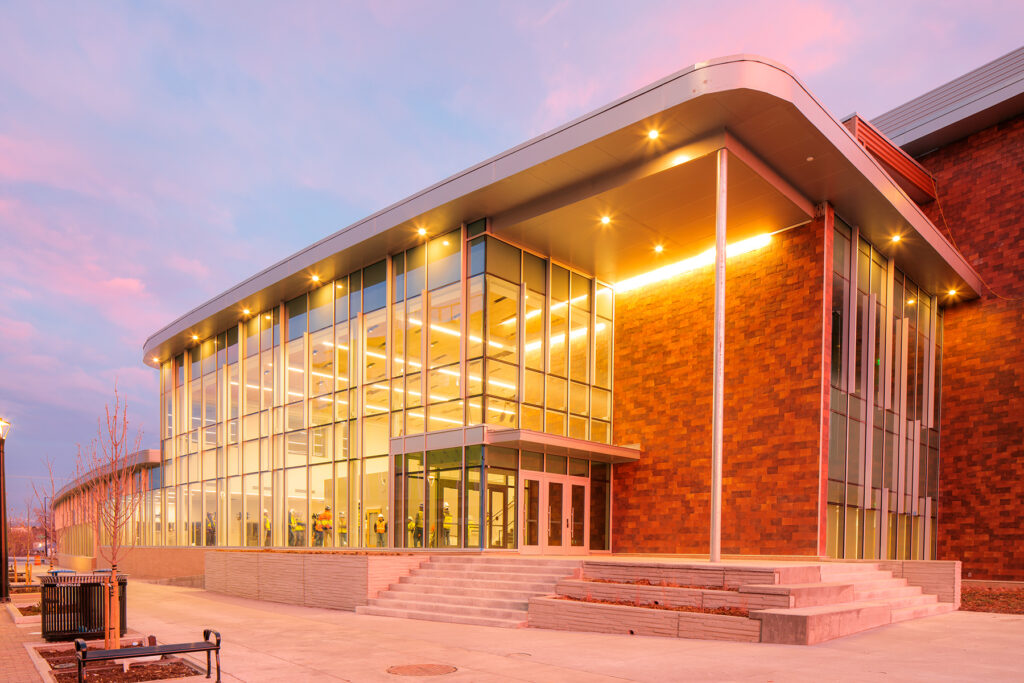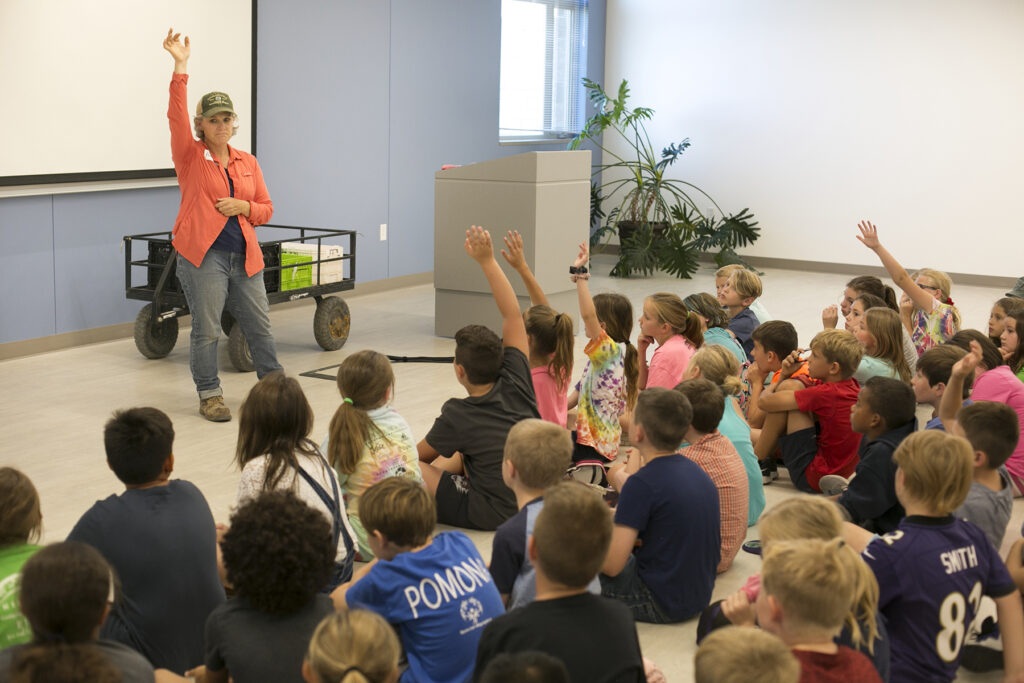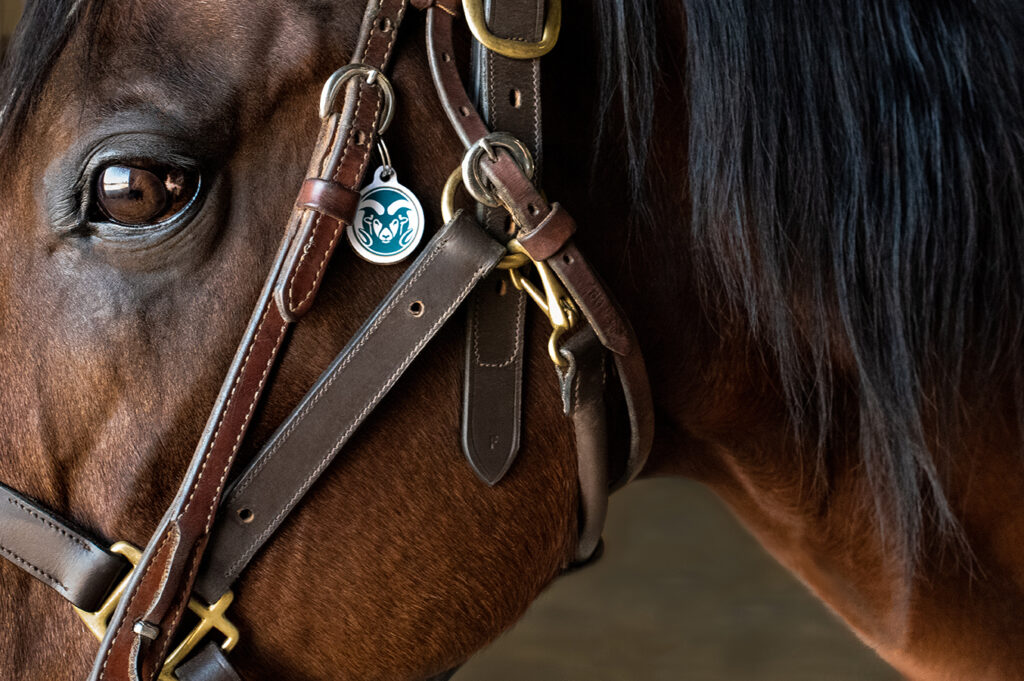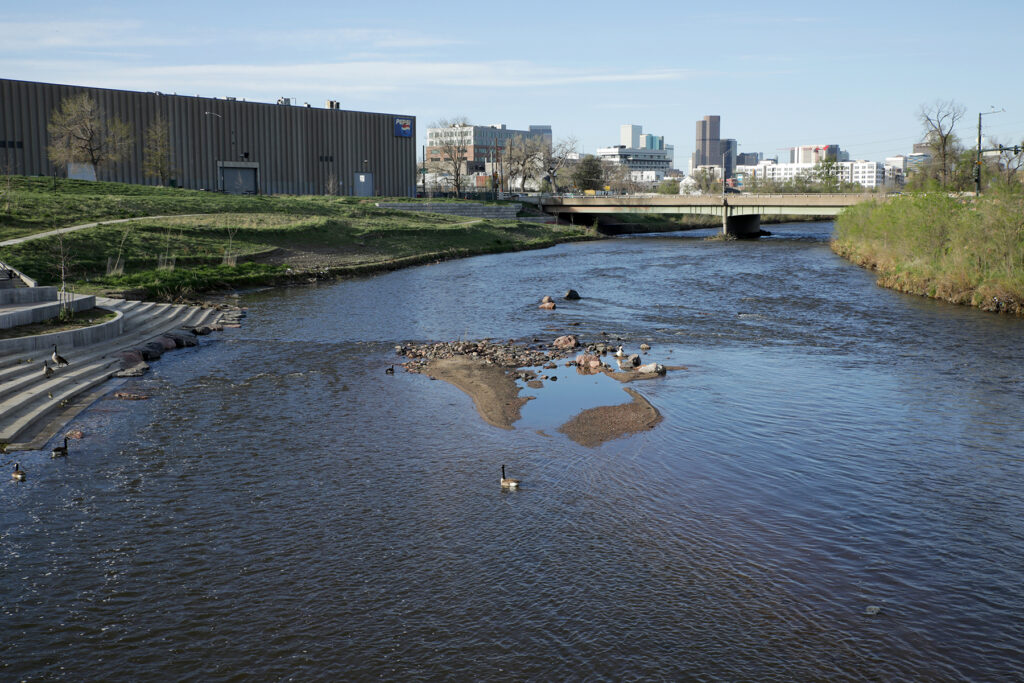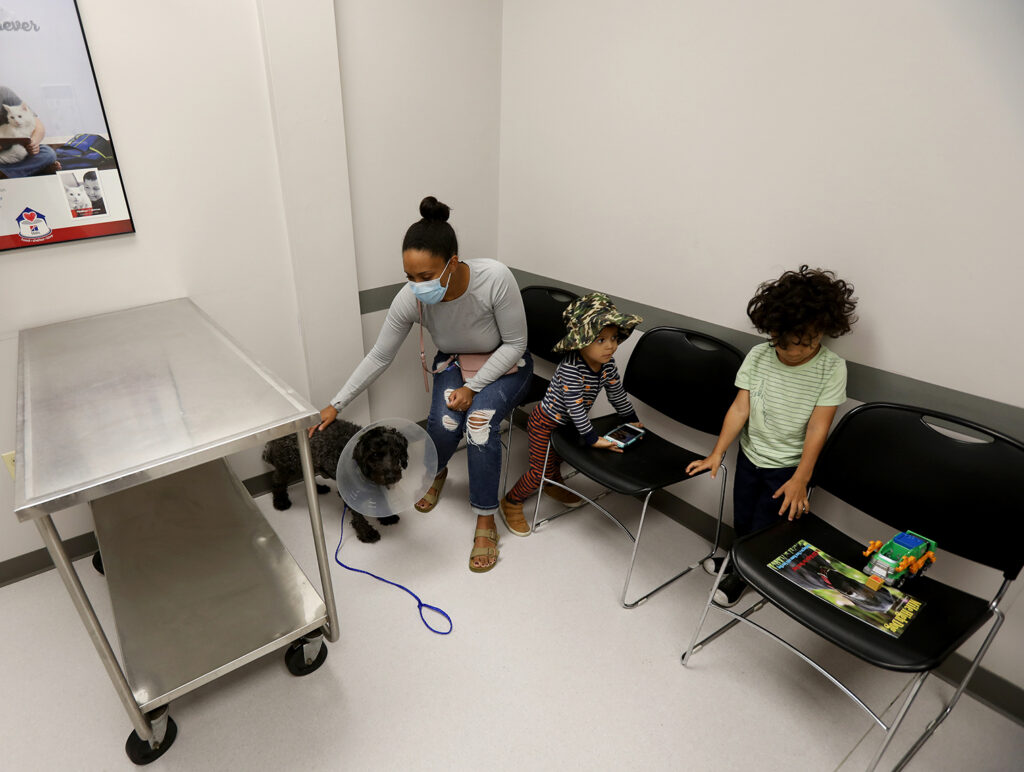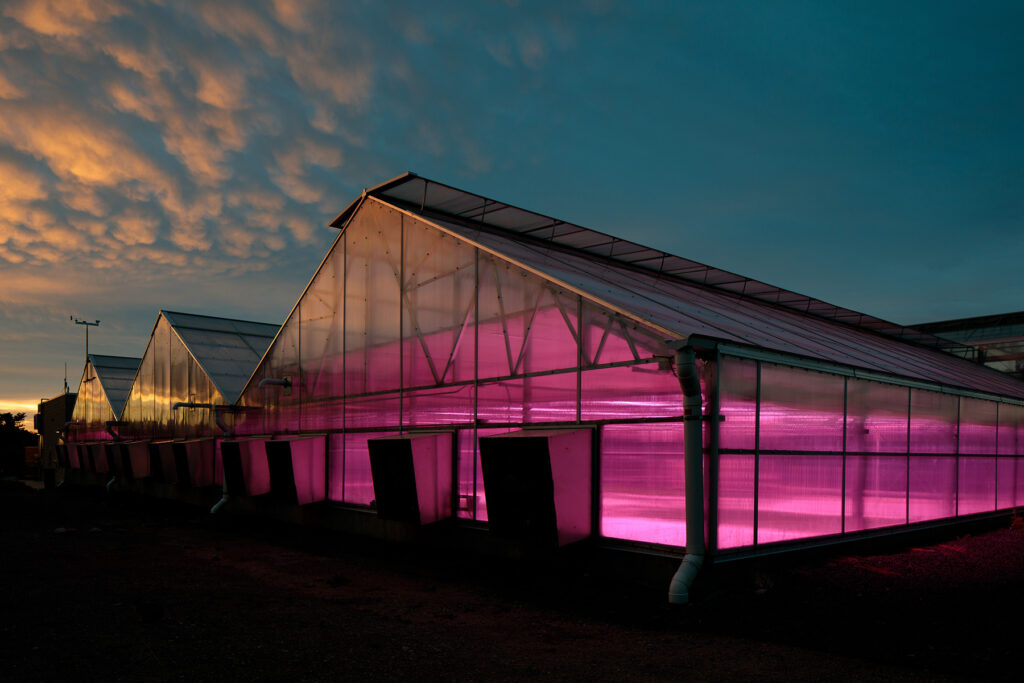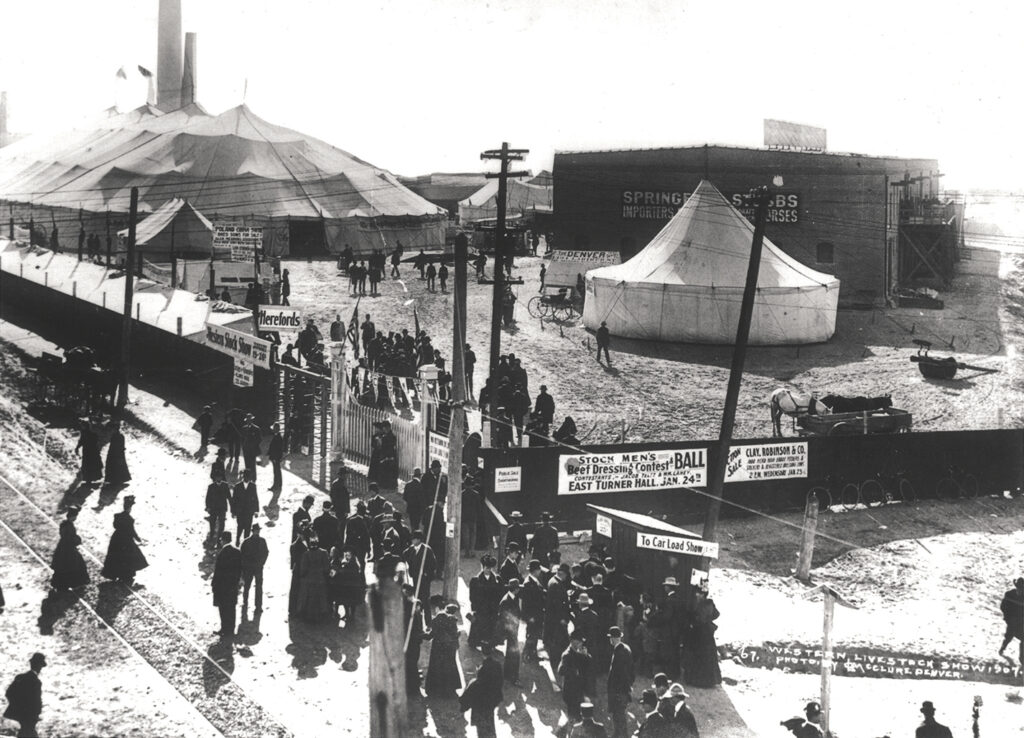
TIES THAT BIND
Colorado State University and the National Western Stock Show have partnered since 1906 to boost education about food and agriculture. Now they enter a new era with the opening of CSU Spur at the National Western Center.
Jan. 3, 2022
COLORADO STATE UNIVERSITY HAS BEEN CENTRAL to the National Western Stock Show since the storied event began 116 years ago and has grown into a Colorado icon. So, it’s no wonder the university jumped to join a partnership that is sustaining and improving the stock show at its historic site in north Denver – and, at the same time, is carrying the state’s agricultural heritage into the future. Five partners, including the CSU System, are redeveloping the 250-acre site to improve the National Western Stock Show and to create a year-round destination for education, entertainment, and agribusiness innovation. The redevelopment is known as the National Western Center; the CSU System is building the center’s educational anchor, the campus known as CSU Spur. The first of three campus buildings will open during the 2022 stock show, which runs Jan. 8-23; a public grand opening is set Jan. 15, as part of CSU Day at the stock show, with tours and demonstrations from noon to 6:30 p.m. Here are just a few of the notable people, programs, and events that have connected CSU and the stock show for more than a century.
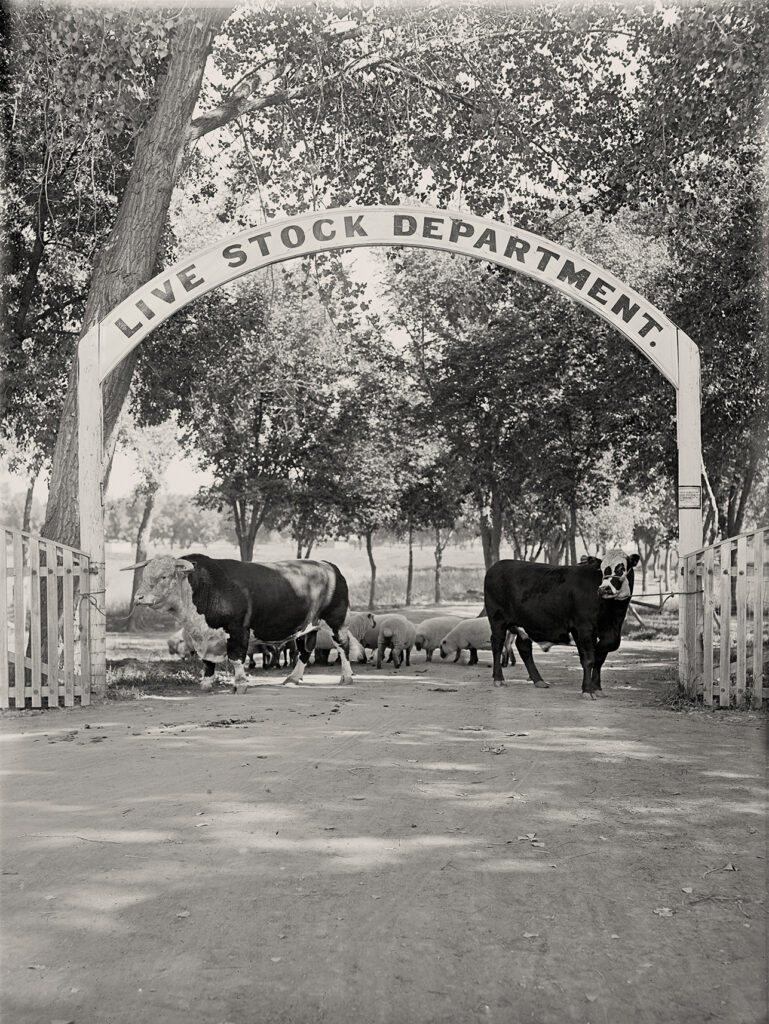
The university and National Western Stock Show have had shared missions in agricultural education for more than a century. Photo: CSU Archives & Special Collections
FIRST YEAR
The Western Live Stock Show began in January 1906 under a borrowed big-top circus tent at the bustling Denver Union Stock Yards, shown at top. The event evolved into the National Western Stock Show, held each January. From the beginning, the stock show was designed to boost food and agriculture through education. The yards were a hub for livestock sales and railroad transportation, with a robust meatpacking industry nearby. Beef cattle were the main attraction during the stock show’s first year: Angus, Galloway, Hereford, and Shorthorn breeds were shown. Sheep and hogs also were exhibited. Draft horses were introduced in 1907, a full-fledged horse show joined the lineup in 1909, and the first rodeo was in 1931.
CHAMPION STEER
Colorado Agricultural College, which became Colorado State University, was involved from the start. A trainload of students – filling 10 passenger coaches – arrived in 1906 to evaluate animals and to exhibit livestock from the college herd. Students showed cattle, hogs, and sheep. A 1,150-pound Shorthorn from the college, named Yampa, was the stock show’s first grand champion steer, shown below. It was sold to a Denver meat market for a record price of 33 cents per pound, or $379.50; that would be roughly $12,000 today. In all, the college earned $1,450 in cash premiums for its winning stock, along with prizes including two silver cups and $15 worth of cigars.
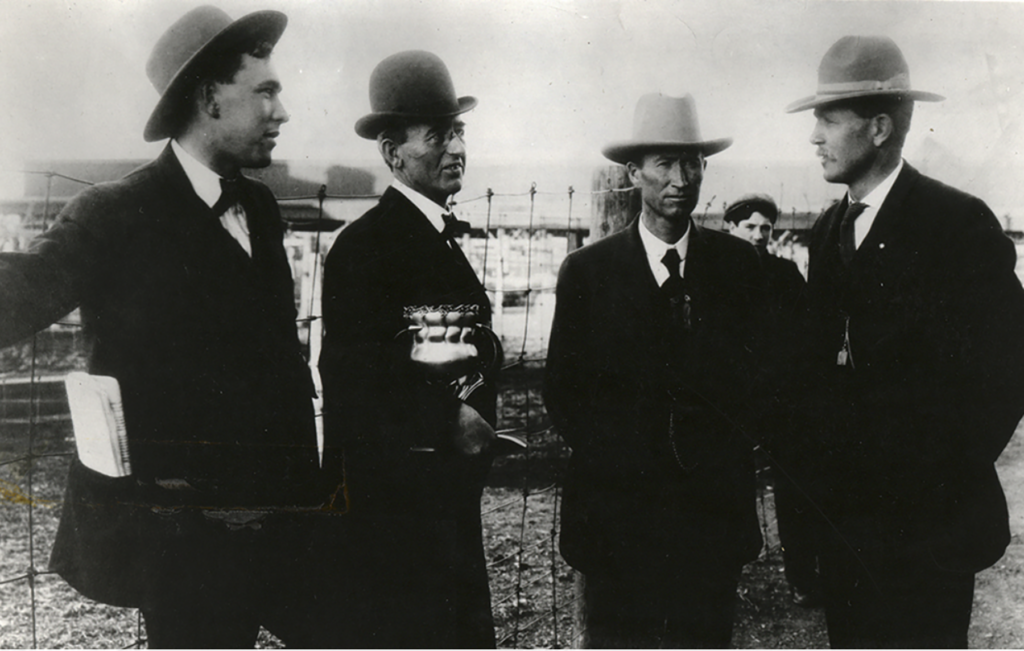
Elias Ammons, second from right, was a leader of the university, the stock show, and the state of Colorado. Photo: National Western Stock Show Archives
ELIAS M. AMMONS
Elias M. Ammons, a cattleman and politician from Douglas County, suggested and helped establish the stock show in his role as president of the Colorado Cattle and Horse Growers Association. Ammons exemplified the close ties between CSU and the National Western Stock Show – and the connections of both to the inner circle of state politics. Beginning in 1909, Ammons served on the executive committee of the State Board of Agriculture, the college’s governing body; he helped direct college operations and was a champion of its agricultural programs. He also was a high-profile spokesman for the cattle industry, served in the Colorado General Assembly, and was governor of Colorado from 1913 to 1915. For nearly 20 years, Ammons was president of the Western Stock Show Association, parent organization of the stock show.
ANIMAL HUSBANDRY
Paralleling the stock show, the animal husbandry department flourished at Colorado Agricultural College in the early 1900s – and dozens of its students worked during the January stock show as clerks, ushers, and assistants to earn money while making professional connections and gaining practical experience.
LIVESTOCK CLUB
In 1912, the Livestock Club formed at Colorado Agricultural College and quickly became one of the school’s largest student groups. Its members were interested in livestock care, breeding, showing, marketing, and evaluation. In particular, the club generated interest in livestock judging. It’s a critical skill: Judging teaches students to select livestock with traits valued by both ranchers and consumers. In 1914, CSU fielded its first judging team at the stock show; scores have followed in the 108 years since. Today, intercollegiate squads also compete in meat and wool judging at the stock show.
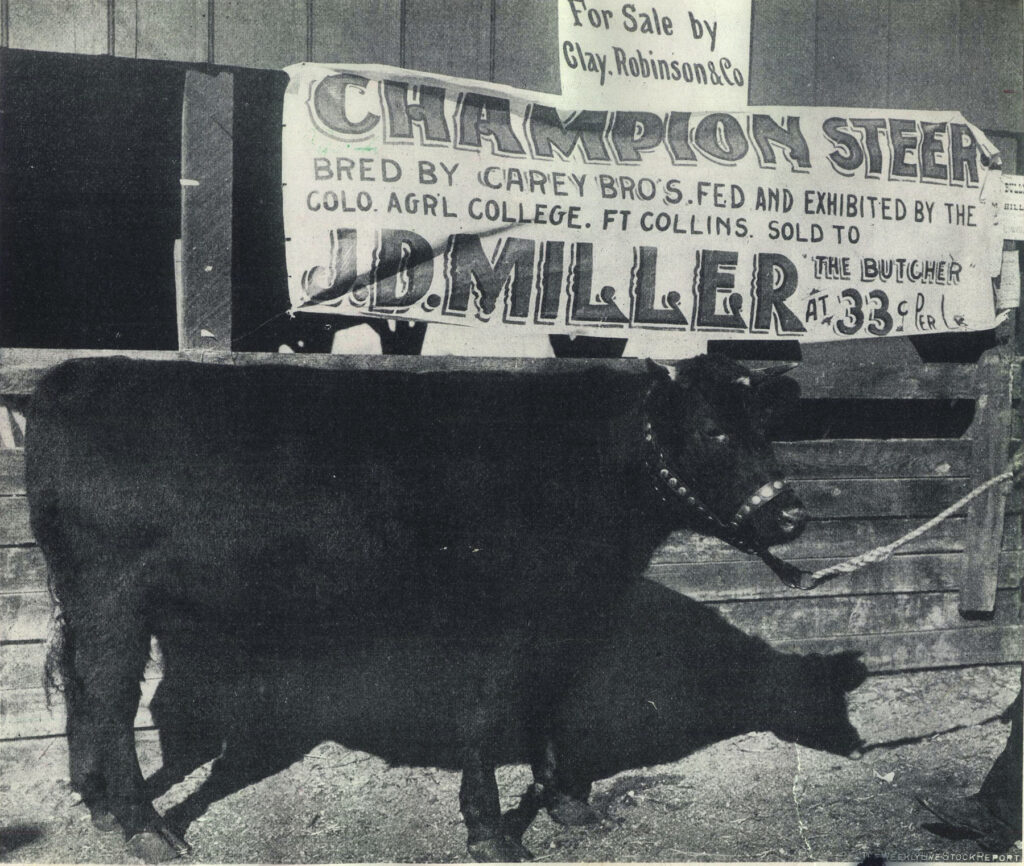
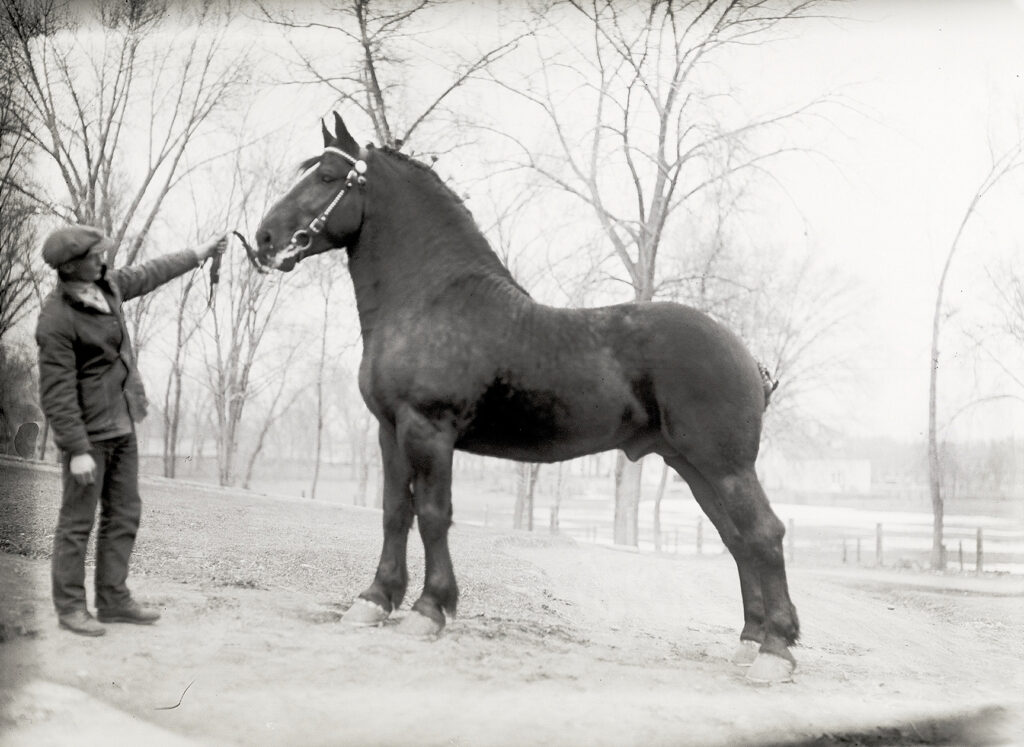
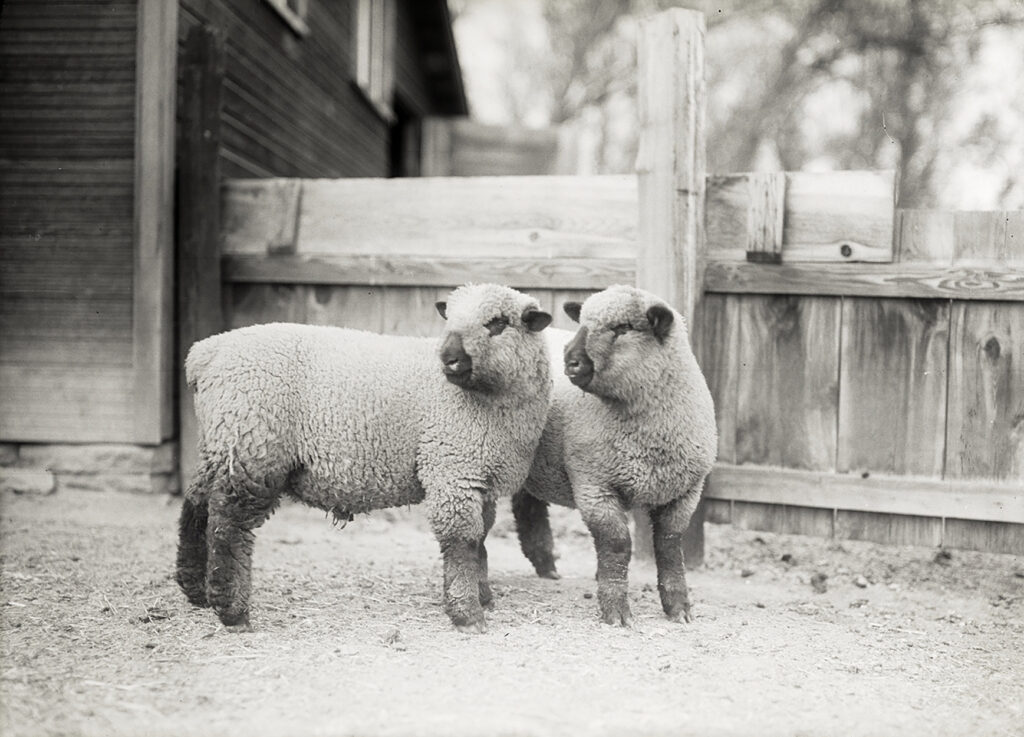

Left: In the first year of the National Western Stock Show, Colorado Agricultural College won grand champion steer. Photo: National Western Stock Show Archive. Right: In addition to cattle, students showed and evaluated draft horses, sheep, and hogs in the stock show’s early years. Photography: CSU Archives & Special Collections
Top: In the first year of the National Western Stock Show, Colorado Agricultural College won grand champion steer. Photo: National Western Stock Show Archive. Bottom three: In addition to cattle, students showed and evaluated draft horses, sheep, and hogs in the stock show’s early years. Photography: CSU Archives & Special Collections
4-H
The federal Smith-Lever Act of 1914 established a national Cooperative Extension Service to provide educational outreach through land-grant universities. Extension helped boost interest in the stock show as a place to see and buy exemplary livestock. It also helped involve boys and girls in 4-H clubs, which, then and now, are coordinated by the Extension arms of land-grant universities. These days, 4-H Day is a highlight of the stock show. In addition, CSU Extension staff and 4-H agents annually give thousands of schoolchildren from Metro Denver tours of the stock show.
TWO JUDGING FIRSTS
In 1929, Colorado Agricultural College made headlines when Evangeline Simmons, from a tiny community near Steamboat Springs, became the first woman named to the college’s nationally competitive senior livestock judging team. The team also included Charles Urquiza, of Querétaro, Mexico, the college’s first international student selected for the livestock judging team. They competed at the Denver stock show, among other big events. Simmons and Urquiza are pictured below with their team.
MOCK STOCK SHOW
College students in 1934 started an annual campus event called the Little National Western, modeled on the stock show. The tradition continues today and provides experience in training, grooming, and showing livestock.
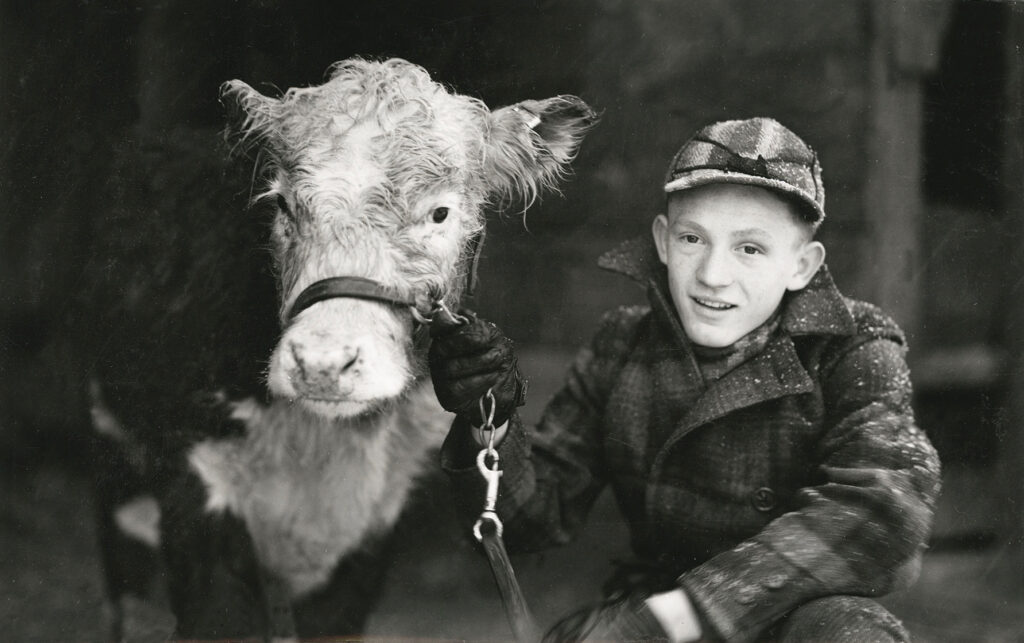
4-Her Benny Shader won a calf and a trip to Hollywood. Photo: CSU Archives & Special Collections
CATCH-A-CALF
In 1941, a 4-H club member named Benny Shader, a 15-year-old from Timnath, won a Hereford steer in the stock show’s Catch-A-Calf Contest. The contest challenges youngsters to catch calves darting around a show arena; the winners feed their steers for a year, then return to the stock show to compete with their animals. Shader drew attention because his steer was sponsored by Smiley Burnette, a popular country music performer and comedic actor in Western movies and TV shows. Shader not only won a steer – but won a trip to Hollywood courtesy of his sponsor. Three years later, Shader had raised cattle and sheep worth $5,080 (about $80,000 today) and was honored by the college’s Cooperative Extension Service as one of the state’s outstanding 4-H club members.
KENNY MONFORT
One of the biggest names in beef burst onto the scene at the 1941 stock show. That’s when Kenny Monfort, a 4-H kid from Greeley, won his first grand championship and a tenfold profit with a steer named Split Ear, pictured below. It was a sign of things to come. Monfort attended Colorado A&M in the late 1940s, studying animal nutrition. He then joined his family business and grew it into a Fortune 500 company that revolutionized beef feeding, processing, and distribution. His father, Warren, had moved in that direction when he and another prominent cattleman, W.D. Farr, started feeding market cattle year-round, rather than only on summer pasture. The younger Monfort – often relying on CSU research – led other innovations that became industry standards: He built enormous feedlots and perfected cattle rations; constructed large packinghouses near his feedlots, instead of shipping cattle long distances to market; and butchered full carcasses into smaller sections, shipping this “boxed beef ” to wholesalers for further meat-cutting, a step that improved efficiency and meat safety. Monfort was elected to the state legislature, became a dedicated philanthropist, and served for several years on CSU’s governing board. He was named 1991 National Western Stock Show Citizen of the West, among other notable honors.
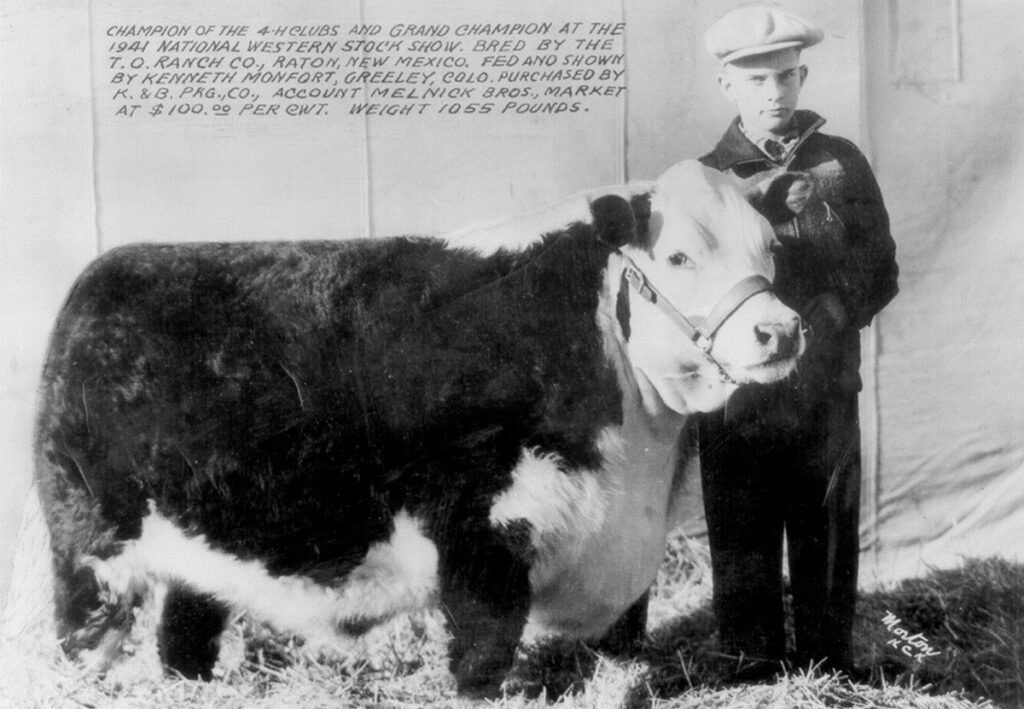
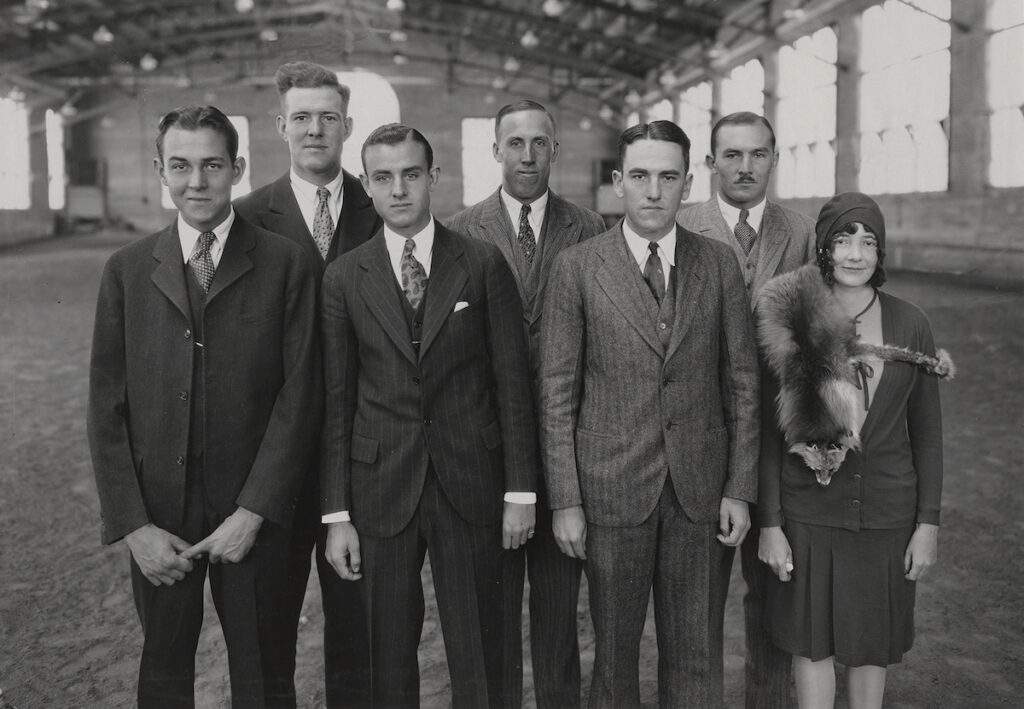

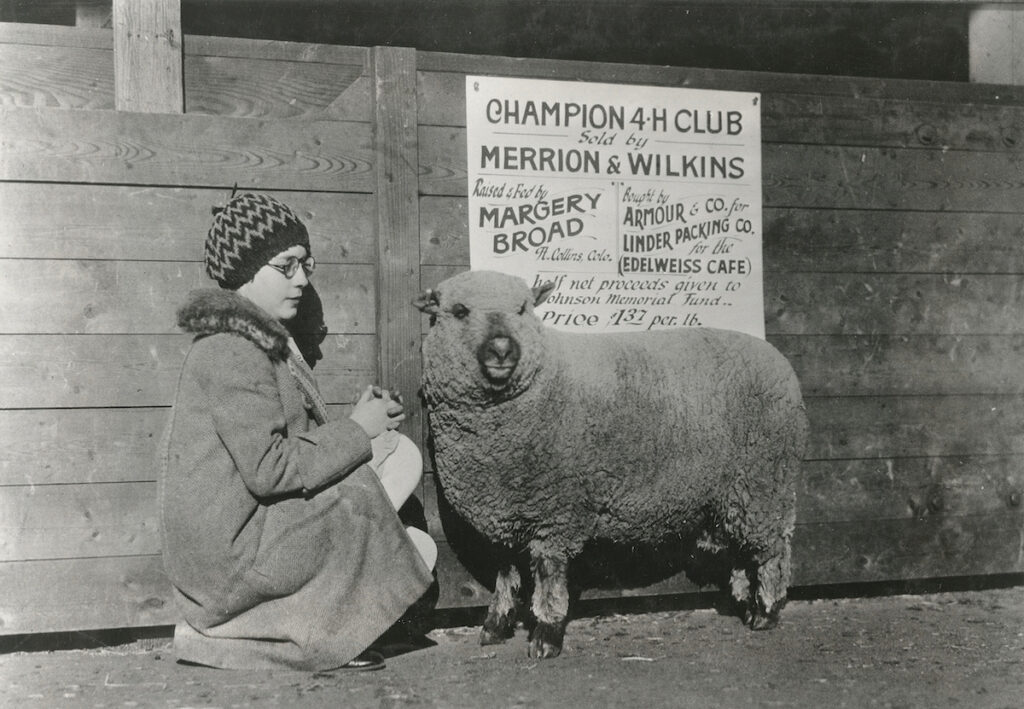
College students and Colorado 4-H club members, above, have had many opportunities to learn and grow through the stock show. They have exhibited livestock and horses, competed on judging teams, and earned academic scholarships. Standouts from earlier years include: in first photo, Kenny Monfort (City of Greeley Museums, Permanent Collection); in second photo, Charles Urquiza, third from left, and Evangeline Simmons, far right (CSU Archives & Special Collections); in third and fourth photos, girls show champion livestock (CSU Archives & Special Collections).
HORSE DOCTOR
Dr. Marvin Beeman, an eminent equine veterinarian, shown below, became the official vet for the National Western’s horse show in 1960. He had earned his Doctor of Veterinary Medicine at CSU three years earlier. Beeman grew up horseback riding on a ranch near Denver, and his fascination with equine athleticism prompted him to become a horse doctor. He went on to co-found the Littleton Equine Medical Center, a premier veterinary hospital for performance horses, and to become a huntsman with the Arapahoe Hunt, a mounted foxhunting club near Denver. Beeman has managed the National Western horse show and has gained international acclaim as a veterinarian concerned with the welfare of horses. He was named 2005 National Western Stock Show Citizen of the West.
DEDICATED VOLUNTEERISM
John Matsushima, a CSU alumnus and professor emeritus, shown below, is a pioneering scientist in beef-cattle feeding and nutrition and is a well-known figure at the National Western Stock Show. He got his start as a 4-H club member growing up near Greeley. Beginning in the late 1950s, Matsushima helped establish practices that improved animal health, producer efficiencies, and meat quality; he also helped open export markets to U.S. beef. Matsushima was founding superintendent of the stock show’s Fed Beef Contest, which began in 1965 and became one of the country’s top carcass contests. It linked feeding practices to carcass quality – demonstrating how proper feeding yields meat valued by consumers. Matsushima volunteered as contest superintendent for 20 years and has personified CSU’s land-grant mission of teaching, research, and outreach. He was honored as 2013 National Western Stock Show Citizen of the West.
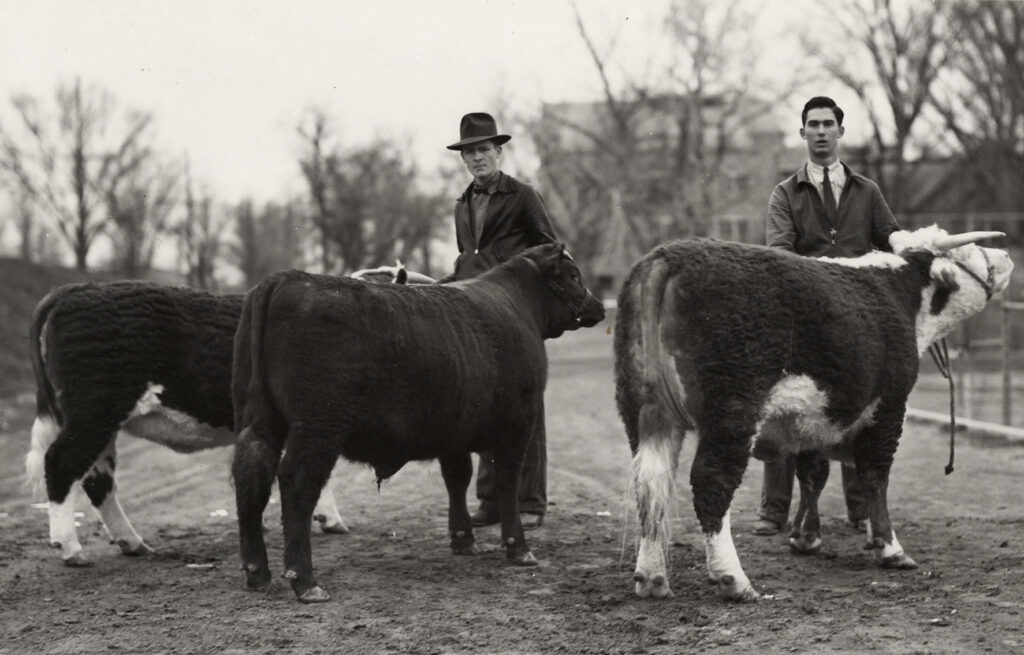
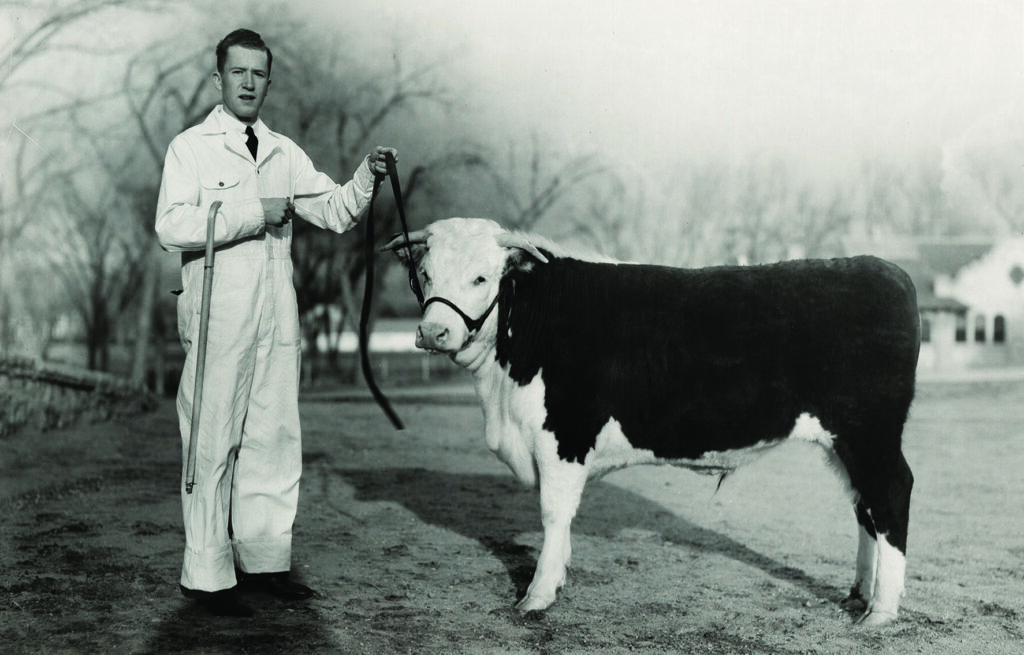
College students for decades have honed livestock showing and judging skills with clubs and activities on campus. Photography: CSU Archives & Special Collections
DUAL LEADERSHIP
Chuck Sylvester, a CSU alumnus and fourth-generation cattle rancher from LaSalle, shown below, became general manager of the National Western Stock Show in 1978. During his 25-year term, Sylvester helped maintain a close partnership between the university and stock show in support of their educational missions. The stock show grew into a mammoth event for ranchers marketing their livestock and for city dwellers flocking to learn about agriculture. Even as he helped grow event attendance to nearly 650,000, Sylvester volunteered for notable CSU programs; for example, serving as co-chair of the well-known Ag Day barbecue, which raises money for student scholarships. He’s among many leaders who have been devoted to both organizations and their shared focus on agricultural education. Pat Grant, another such leader, was longtime president and chief executive officer of the association that oversees the stock show, while also serving on the Board of Governors of the Colorado State University System.
SCHOLARSHIP BONANZA
Scholarships for college students became a top priority for the stock show in 1983. That’s when the National Western Scholarship Trust formed to award scholarships to students studying agriculture, veterinary science, and rural medicine. Its founding chairman and a driving force was the late Jim Henry of Longmont, a CSU alumnus and cattle feeder who, with his wife, Nadine, was an ardent supporter of both the stock show and the university. Since it began, the trust has awarded more than 2,500 scholarships to students at schools in Colorado and Wyoming. More than 1,000 CSU students have earned scholarships in that time; that’s 40% of the total number conferred, making CSU students the most frequent beneficiaries. During the 2021- 2022 academic year alone, 40 CSU undergraduates, graduate students, and veterinary students are benefiting from National Western scholarships; the awards amount to more than $200,000.
CITIZEN OF THE WEST
In 2002, CSU President Albert C. Yates, shown below, was named National Western Stock Show Citizen of the West. The honor is annually bestowed on eminent business people, civic leaders, educators, and philanthropists who exemplify the spirit and determination of a Western pioneer. It’s more than an accolade. The Citizen of the West gala dinner is one of four events that funds the National Western Scholarship Trust; the trust, in turn, awards more than 100 scholarships to college students each year, ranging from $2,500 to $15,000 per student. Nearly $7 million has been granted through the years – and CSU students are heavily represented among hundreds of recipients (See above). Yates was the first CSU president honored as Citizen of the West. He was followed in 2018 by Tony Frank, former CSU president and current chancellor of the CSU System. Many other honorees have had strong CSU ties.
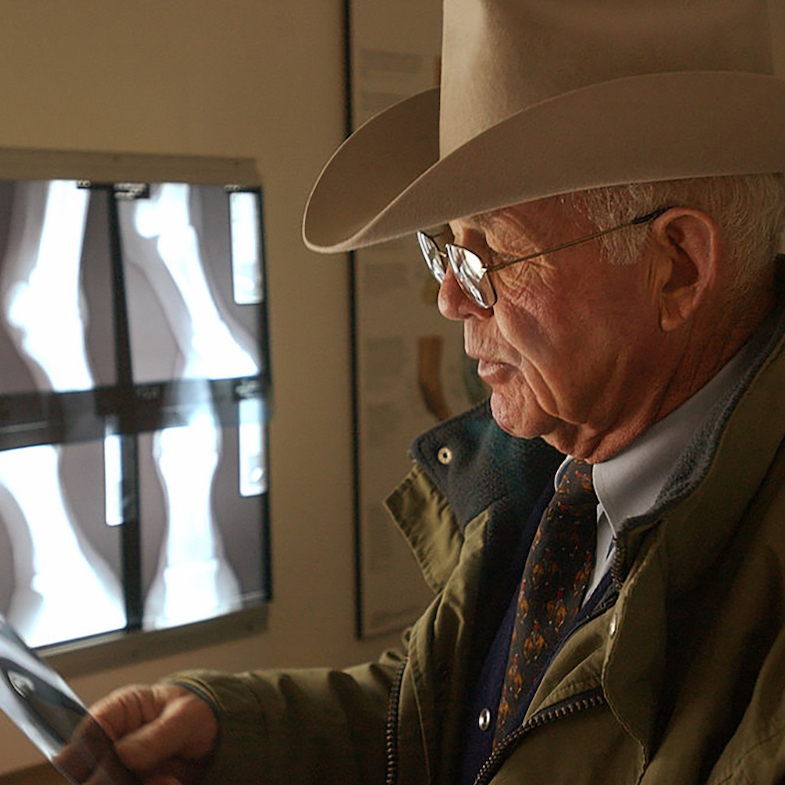

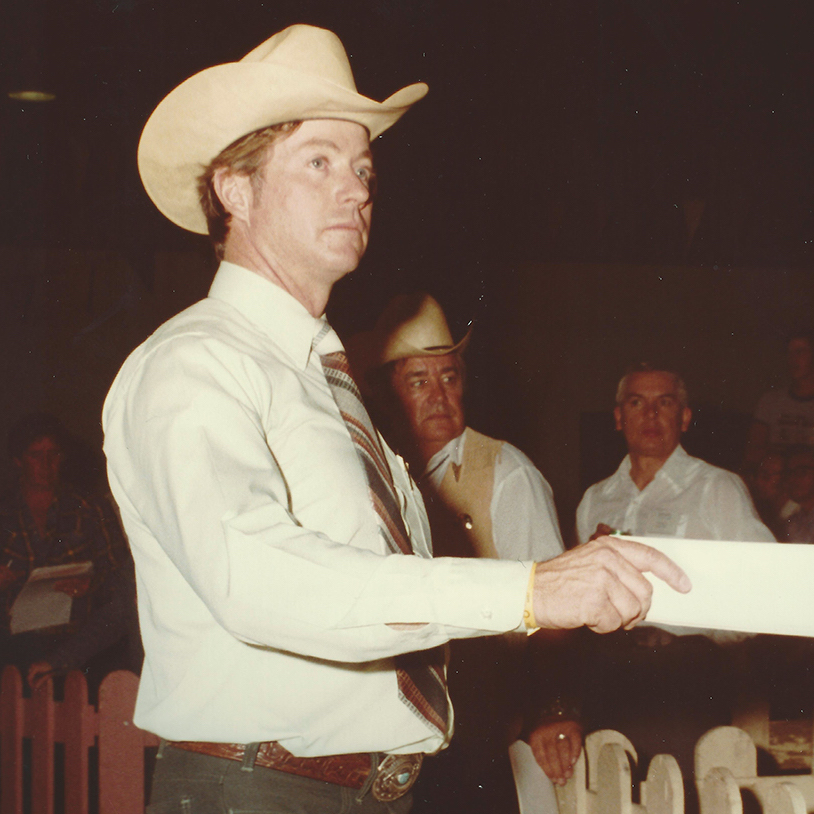
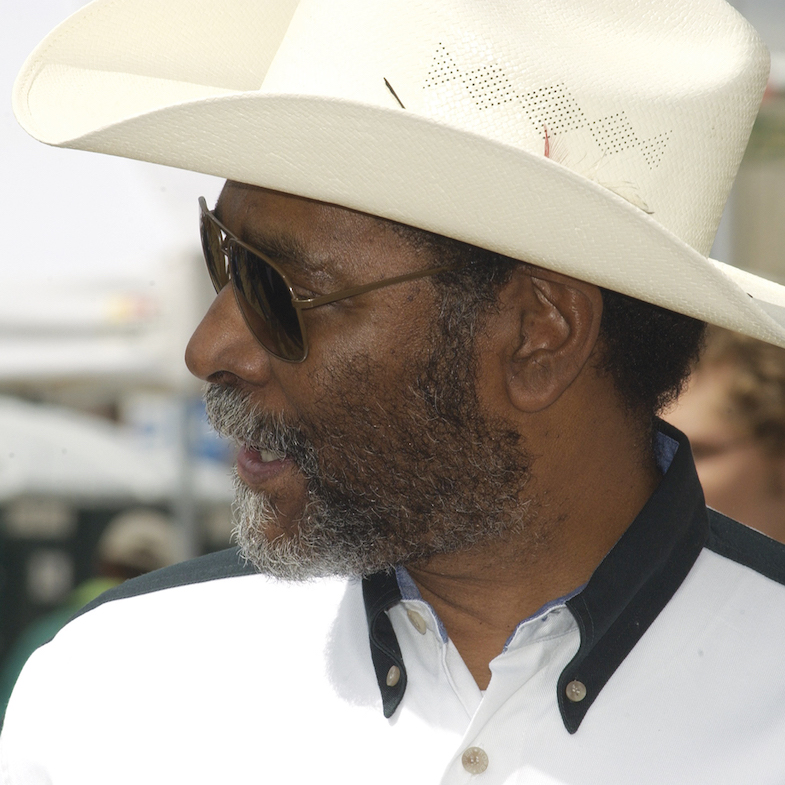
Many prominent leaders have ties to both Colorado State University and the National Western Stock Show. They include, from left: Dr. Marvin Beeman (Photo: Brian Brainerd / The Denver Post), John Matsushima (Photo: Nancy Oliver), Chuck Sylvester (Photo: National Western Stock Show Archives), and Albert Yates (Photo: William A. Cotton / Colorado State University).




Many prominent leaders have ties to both Colorado State University and the National Western Stock Show. They include, from top: Dr. Marvin Beeman (Photo: Brian Brainerd / The Denver Post), Albert Yates (Photo: William A. Cotton / Colorado State University), John Matsushima (Photo: Nancy Oliver), and Chuck Sylvester (Photo: National Western Stock Show Archives).
LIVESTOCK LEADER
Each year during the stock show, the CSU Department of Animal Sciences recognizes an outstanding agribusiness professional as Livestock Leader – a person whose vision, innovations, and perseverance have helped supply the world with food and fiber. The award is a highlight of CSU’s involvement in the stock show. In 2008, Polly Johnson, shown below, was the first individual Colorado cattlewoman to be recognized. She is a CSU alumna and matriarch of Collins Ranch, which spans thousands of acres on Colorado’s Eastern Plains. Johnson’s grandfather, Charles Collins, established the ranch in 1907 near Kit Carson. While growing up there, Johnson worked alongside the cowboys – riding, fencing, feeding, calving, branding – and earned the nickname “prairie princess.” She and her late husband, Rogers, later assumed ownership, and she has been pivotal in managing the ranch through drought, economic depression, and other challenges. The sixth generation of Johnson’s family is now living and working on Collins Ranch.
HANDS-ON LEARNING
Continuing a tradition begun in 1906, the CSU Seedstock Merchandising Team prepares and shows purebred Hereford and Angus cattle at the stock show each year; the team later sells the cattle at auction. Just as they did that first year, students on the team gain practical experience in all aspects of marketing cattle. They aren’t the only ones learning at the stock show. CSU veterinary students volunteer to collect urine samples from animals at the show; the samples are tested to ensure livestock are free from performance-enhancing drugs – and that those headed to market will produce wholesome carcasses. Veterinary students help to randomly collect samples from market beef, swine, lambs, and goats.
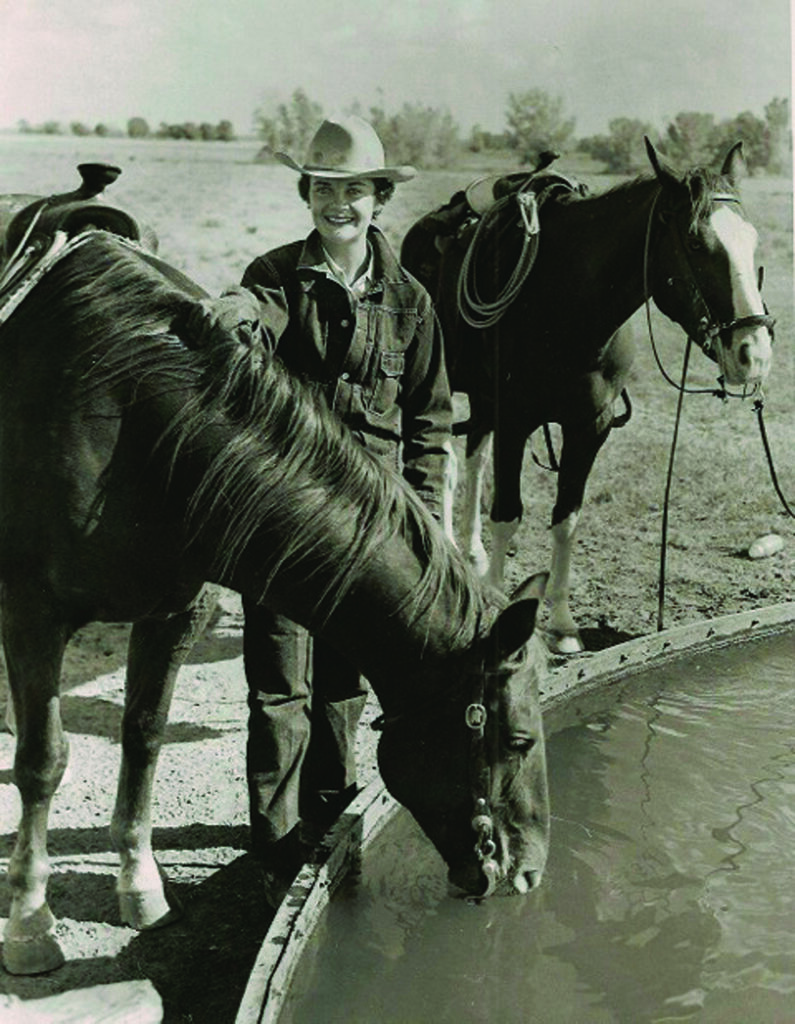
Polly Johnson was named 2008 Livestock Leader. Photo: Johnson family
AG ADVENTURE EXHIBIT
The Hall of Education is a hive of activity during the stock show, and CSU students are in the thick of it, running an interactive exhibit called Ag Adventure. The program teaches kids where their food comes from, with fun, hands-on activities related to everything from growing crops to milking cows. Nearby, visitors find CAM the Ram, CSU’s mascot, who’s nearly always up for a snapshot with fans.
INTERNATIONAL FORUM
Since 2015, CSU and the National Western Stock Show have jointly hosted the International Livestock Forum, a gathering of industry, government, and academic experts who discuss current issues and trends in global food production and agribusiness. It is led by Gary Smith, a University Distinguished Professor emeritus, shown below, whose research has spurred critical advancements in meat safety. University students from across the nation and around the world join the International Livestock Forum and experience tours of CSU, visits to some of the state’s top agricultural enterprises, and behind-the-scenes access at the stock show.
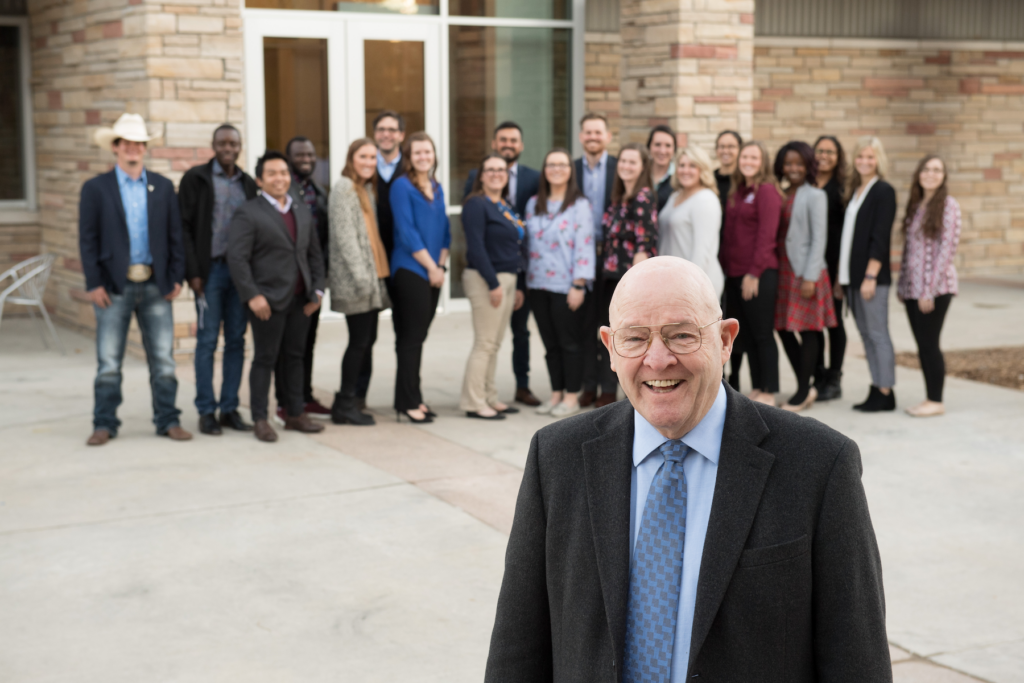
Gary Smith, University Distinguished Professor emeritus, with animal sciences students from around the globe during the International Livestock Forum. Photo: John Eisele / Colorado State University
CSU DAY
They don’t come by train anymore. But droves of university students, alumni, and employees gather each year for CSU Day at the stock show. During an afternoon rodeo performance, the CSU president takes a spin around the arena in a stagecoach. The CSU community has helped the 16-day January event gain its reputation as the “Super Bowl of stock shows” – with some 12,000 head of livestock exhibited, dozens of horse shows and rodeo performances, nearly 900 vendors, and an annual attendance topping 650,000. The stock show has an estimated economic impact of $130 million each year.
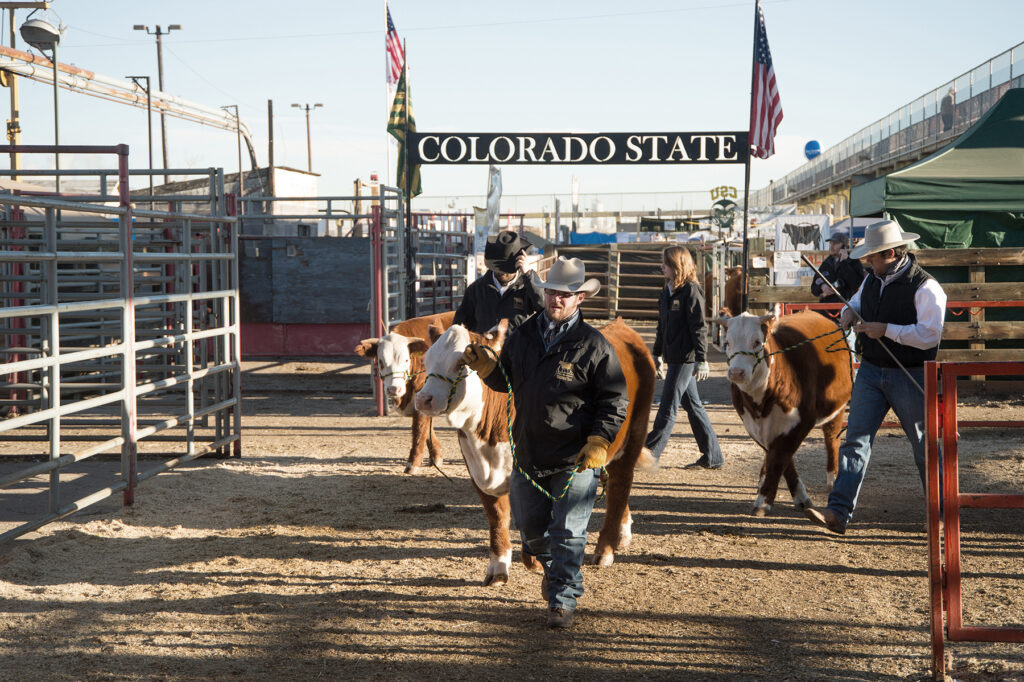
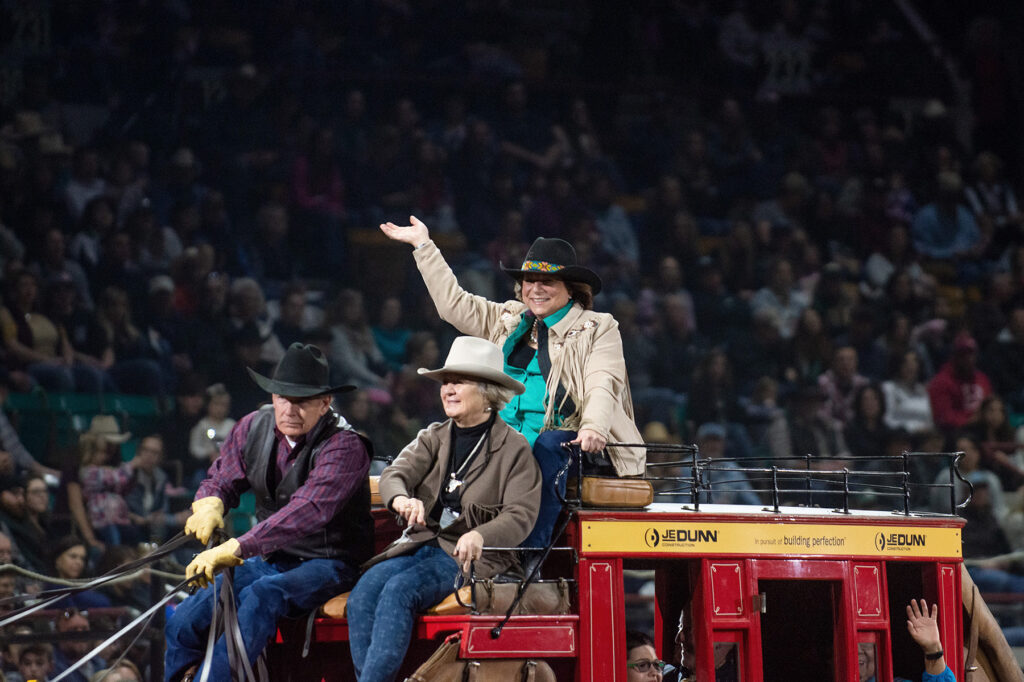

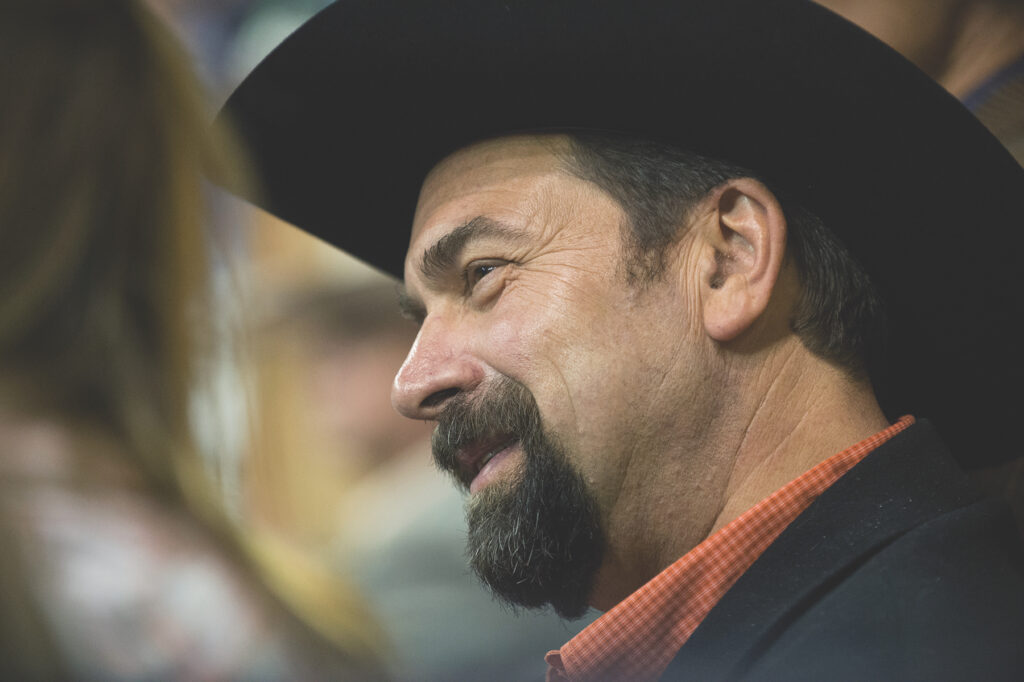
Ties between the university and the stock show continue to flourish. For instance, clockwise from above left, the CSU Seedstock Merchandising Team annually shows cattle (Photo: John Eisele / Colorado State University); the two organizations jointly sponsor the annual International Livestock Forum (Photo: Joe A. Mendoza / Colorado State University); Tony Frank, CSU System chancellor, leads construction of the CSU Spur campus on stock show grounds (Photo: John Eisele / Colorado State University); and CSU President Joyce McConnell rides through the rodeo arena during CSU Day at the stock show (Photo: Grace Branaugh / Colorado State University).
Ties between the university and the stock show continue to flourish. For instance, from top, the CSU Seedstock Merchandising Team annually shows cattle (Photo: John Eisele / Colorado State University); CSU President Joyce McConnell rides through the rodeo arena during CSU Day at the stock show (Photo: Grace Branaugh / Colorado State University); the two organizations jointly sponsor the annual International Livestock Forum (Photo: Joe A. Mendoza / Colorado State University); and Tony Frank, CSU System chancellor, leads construction of the CSU Spur campus on stock show grounds (Photo: John Eisele / Colorado State University).
A NEW ERA
Jan. 15, 2022, will mark the start of a new era for the university and the stock show. It will be CSU Day at the stock show – and grand-opening day for CSU Spur, the new CSU System campus at the National Western Center. The campus will be open to all – a hub for public education, research, and community outreach, with programs centered on food, water, and health. Visitors on Jan. 15 may tour the first building to fully open at CSU Spur; called Vida, Spanish for “life,” the building will be a site for programs related to human and animal health. Among the offerings in Vida are a new Dumb Friends League Veterinary Hospital, the Temple Grandin Equine Center, a CSU Equine Sports Medicine Clinic, virtual reality experiences teaching human and animal anatomy, and multiple displays about health and related careers. CSU Spur reflects the university’s role in the partnership that is transforming the grounds of the National Western Stock Show into the National Western Center. Other partners are: the city and county of Denver; the Western Stock Show Association, the nonprofit that produces the stock show; History Colorado, a branch of the Colorado Department of Higher Education; and the Denver Museum of Nature & Science. For more information, visit csuspur.org.
Sources: Colorado Historic Newspapers Collection; CSU Department of Animal Sciences; Democracy’s College in the Centennial State: A History of Colorado State University, by James E. Hansen II (Colorado State University, 1977); The Denver Post; National Western Scholarship Trust; National Western Stock Show; Riding High: Colorado Ranchers and 100 Years of the National Western Stock Show, by Thomas J. Noel (Fulcrum Publishing, 2005); Ten Days Every January, by Willard E. Simms (Western Stock Show Association, 1980).
Photo at top: The stock show began under a borrowed big-top circus tent in 1906. Photo: National Western Stock Show Archives
SHARE

